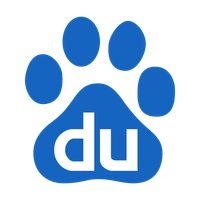
Baidu Inc
NASDAQ:BIDU


| US |

|
Johnson & Johnson
NYSE:JNJ
|
Pharmaceuticals
|
| US |

|
Berkshire Hathaway Inc
NYSE:BRK.A
|
Financial Services
|
| US |

|
Bank of America Corp
NYSE:BAC
|
Banking
|
| US |

|
Mastercard Inc
NYSE:MA
|
Technology
|
| US |

|
UnitedHealth Group Inc
NYSE:UNH
|
Health Care
|
| US |

|
Exxon Mobil Corp
NYSE:XOM
|
Energy
|
| US |

|
Pfizer Inc
NYSE:PFE
|
Pharmaceuticals
|
| US |

|
Palantir Technologies Inc
NYSE:PLTR
|
Technology
|
| US |

|
Nike Inc
NYSE:NKE
|
Textiles, Apparel & Luxury Goods
|
| US |

|
Visa Inc
NYSE:V
|
Technology
|
| CN |

|
Alibaba Group Holding Ltd
NYSE:BABA
|
Retail
|
| US |

|
3M Co
NYSE:MMM
|
Industrial Conglomerates
|
| US |

|
JPMorgan Chase & Co
NYSE:JPM
|
Banking
|
| US |

|
Coca-Cola Co
NYSE:KO
|
Beverages
|
| US |

|
Walmart Inc
NYSE:WMT
|
Retail
|
| US |

|
Verizon Communications Inc
NYSE:VZ
|
Telecommunication
|
Utilize notes to systematically review your investment decisions. By reflecting on past outcomes, you can discern effective strategies and identify those that underperformed. This continuous feedback loop enables you to adapt and refine your approach, optimizing for future success.
Each note serves as a learning point, offering insights into your decision-making processes. Over time, you'll accumulate a personalized database of knowledge, enhancing your ability to make informed decisions quickly and effectively.
With a comprehensive record of your investment history at your fingertips, you can compare current opportunities against past experiences. This not only bolsters your confidence but also ensures that each decision is grounded in a well-documented rationale.
Do you really want to delete this note?
This action cannot be undone.

| 52 Week Range |
80.33
118.15
|
| Price Target |
|
We'll email you a reminder when the closing price reaches USD.
Choose the stock you wish to monitor with a price alert.

|
Johnson & Johnson
NYSE:JNJ
|
US |

|
Berkshire Hathaway Inc
NYSE:BRK.A
|
US |

|
Bank of America Corp
NYSE:BAC
|
US |

|
Mastercard Inc
NYSE:MA
|
US |

|
UnitedHealth Group Inc
NYSE:UNH
|
US |

|
Exxon Mobil Corp
NYSE:XOM
|
US |

|
Pfizer Inc
NYSE:PFE
|
US |

|
Palantir Technologies Inc
NYSE:PLTR
|
US |

|
Nike Inc
NYSE:NKE
|
US |

|
Visa Inc
NYSE:V
|
US |

|
Alibaba Group Holding Ltd
NYSE:BABA
|
CN |

|
3M Co
NYSE:MMM
|
US |

|
JPMorgan Chase & Co
NYSE:JPM
|
US |

|
Coca-Cola Co
NYSE:KO
|
US |

|
Walmart Inc
NYSE:WMT
|
US |

|
Verizon Communications Inc
NYSE:VZ
|
US |
This alert will be permanently deleted.
 Baidu Inc
Baidu Inc
Baidu Inc
In the bustling tech ecosystem of China, Baidu Inc. stands as a towering colossus, much like Google in the West. Founded in the year 2000 by Robin Li and Eric Xu, the company initially carved its niche by pioneering search engine technology tailored specifically for the Chinese language and consumer. Baidu has since evolved far beyond its foundational search engine services, integrating artificial intelligence into its core operations. The company's strategic emphasis on AI-driven technology allows it to maintain relevance in a rapidly transforming digital landscape. This evolution is evident in its diversified portfolio, which now includes AI Cloud services, intelligent driving platforms, and various other AI-centric ventures. Through leveraging these advanced technologies, Baidu has cemented its role as an indispensable partner to businesses and government initiatives within China, providing tools to enhance efficiency and innovation.
The company's revenue generation machine is fueled primarily by advertising services, which remain its backbone, albeit with a nuanced and sophisticated approach. Baidu combines its search engine prowess with AI to offer targeted advertisements, ensuring businesses reach their exact audience efficiently through its platform. Additionally, its investments in autonomous vehicles and cloud computing stand as significant areas of interest and future growth. With its autonomous driving unit, Apollo, and Baidu Cloud, the company seeks to spearhead technological advancements that promise new horizons of income streams. Meanwhile, Baidu’s strategic partnerships and continuous reinvestment into AI and machine learning reinforce its position not just as a tech giant, but as an innovator striving to stay ahead in the global tech race.

In the bustling tech ecosystem of China, Baidu Inc. stands as a towering colossus, much like Google in the West. Founded in the year 2000 by Robin Li and Eric Xu, the company initially carved its niche by pioneering search engine technology tailored specifically for the Chinese language and consumer. Baidu has since evolved far beyond its foundational search engine services, integrating artificial intelligence into its core operations. The company's strategic emphasis on AI-driven technology allows it to maintain relevance in a rapidly transforming digital landscape. This evolution is evident in its diversified portfolio, which now includes AI Cloud services, intelligent driving platforms, and various other AI-centric ventures. Through leveraging these advanced technologies, Baidu has cemented its role as an indispensable partner to businesses and government initiatives within China, providing tools to enhance efficiency and innovation.
The company's revenue generation machine is fueled primarily by advertising services, which remain its backbone, albeit with a nuanced and sophisticated approach. Baidu combines its search engine prowess with AI to offer targeted advertisements, ensuring businesses reach their exact audience efficiently through its platform. Additionally, its investments in autonomous vehicles and cloud computing stand as significant areas of interest and future growth. With its autonomous driving unit, Apollo, and Baidu Cloud, the company seeks to spearhead technological advancements that promise new horizons of income streams. Meanwhile, Baidu’s strategic partnerships and continuous reinvestment into AI and machine learning reinforce its position not just as a tech giant, but as an innovator striving to stay ahead in the global tech race.





























 You don't have any saved screeners yet
You don't have any saved screeners yet
